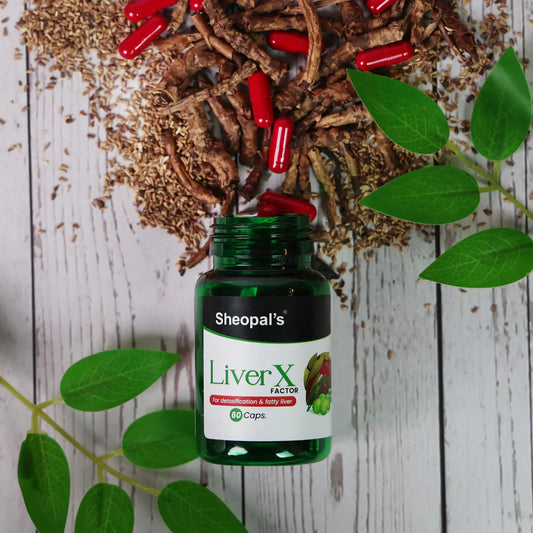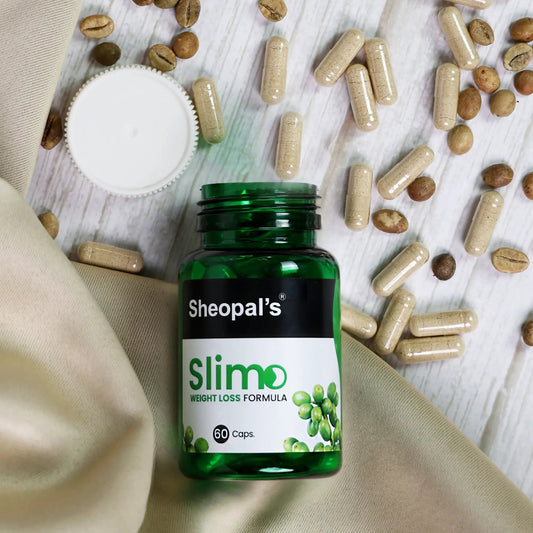Among people who love natural herbs to address energy, stress, stamina, and vitality, Shilajit vs Ashwagandha is a very common debate. If you are among them, a query, which one is better, might appear in your mind.
Both herbs or supplements formulated using them have been used for thousands of years in the ancient Indian medicine system - Ayurveda.
In this post, learn the basics about both herbs, the difference between them, a comparison of both herbs sexual wellness, their side effects, and dosage.
What Is Shilajit?
Shilajit is a sticky, tar-like substance that is obtained from Himalayan rocks. It is highly mineral-rich and formed over thousands of years through the microbial activity and decomposition of plants. Its active components are as follows:
● Fulvic Acid (up to 60 to 80%) - Known for antioxidant properties and enhances nutrient absorption.
● Humic Acid - Acknowledged for its anti-inflammatory and detoxifying properties.
● Trace Minerals - Contains more than 80 essential minerals like iron, magnesium, and zinc.
Scientific Research-Backed Shilajit Benefits for Men
● A 1989 study published in the International Journal of Pharmacology states that fulvic acid (a compound found in Shilajit) supports ATP production. Due to this, it is a natural energy enhancer.
● According to a 2012 study published in Oxidative Medicine and Cellular Longevity, Shilajit can protect against Alzheimer's disease and slow down cognitive decline.
● A 2016 study done by S Pandit and published in Andrologia has found that taking Shilajit regularly for 90 days can significantly increase testosterone levels in men.
What Is Ashwagandha?
Ashwagandha's botanical name is Withania somnifera. Experts often refer Ashwagandha to “Indian Ginseng.” It is a highly recognised Ayurvedic medicinal herb.
Since ancient times, it has been traditionally used to address stress, fatigue, and general debility. It belongs to the nightshade family and is found in dry regions of India and the Middle East.
Its active components are as follows:
● Withanolides – Bioactive compounds with neuroprotective and anti-inflammatory effects.
● Alkaloids & Saponins – Improves immunity and balances hormones.
Scientific Research-Backed Ashwagandha Benefits
● A 2012 study published in the Indian Journal of Psychological Medicine states that consuming Ashwagandha regularly can reduce cortisol levels by up to 27.9%.
● According to a 2019 study published in Cureus 2019, Ashwagandha reduces insomnia symptoms and helps improve sleep quality.
● A 2015 study published in the Journal of the International Society of Sports Nutrition states that Ashwagandha can enhance physical strength, muscle recovery, and VO2 max. In brief, it improves physical performance.
Difference Between Shilajit and Ashwagandha
Here are the key differences between Shilajit and Ashwagandha:
|
Feature
|
Shilajit
|
Ashwagandha
|
|
Key compounds
|
Fulvic acid, humic acids, and minerals
|
Withanolides
|
|
Origin
|
Himalayan resin
|
Medicinal herb
|
|
Form
|
Resin, capsules, and powder
|
Tinctures, powder, and capsules
|
|
Benefits
|
Immunity, testosterone, and energy
|
Stress relief, muscle recovery, and brain function
|
|
Best for
|
Physical stamina and strength
|
Relaxation and mental well-being
|
Comparison of Shilajit & Ashwagandha for Sexual Wellness
Usually, people relate both herbs, Shilajit and Ashwagandha, to sexual wellness. Here, have a close look at the following table that compares Shilajit and Ashwagandha for sexual health:
|
Feature
|
Shilajit
|
Ashwagandha
|
|
Libido
|
Thought to support sexual health and improve libido in men and women
|
Might enhance libido and overall sexual health
|
|
Erectile function
|
Might improve penile erection
|
Some studies suggest it can address erectile dysfunction
|
|
Hormonal balance
|
Help improve testosterone levels
|
Studies state its adaptogenic effects on hormonal balance
|
|
Aphrodisiac qualities
|
Conventionally considered to have aphrodisiac qualities
|
Recognised for its strong aphrodisiac qualities
|
|
Menstrual health
|
No sound evidence for its usage and effectiveness in females’ reproductive health
|
Might help improve women’s reproductive health
|
|
Sperm quality
|
Experts believe it can improve the motility and quality of males’ sperm
|
Studies suggest it might improve sperm quality
|
Ashwagandha or Shilajit: Which Is Better?
Both Shilajit and Ashwagandha have their own properties and functions. So, no one, except for you or your doctor, can say which one is better.
Prefer Ashwagandha to
● Manage anxiety and stress
● Enhance relaxation and sleep quality
● Improve cognitive resilience
● Ashwagandha for Weight loss
● Lower cortisol (stress hormone) levels and adrenal health
And prefer Shilajit to
● Enhance physical stamina and energy
● Boost nutrient absorption
● Improve sperm quality and testosterone levels
● Shilajit for Weight loss and boost Stamina
● Aids anti-ageing and mitochondrial function
Side Effects and Interactions
Taking both Shilajit and Ashwagandha is usually safe and leaves no harmful effects on the human body. However, they can carry some side effects, especially if consumed over or irregularly without consulting an experienced ayurvedacharya.
Here is a comparative study of Shilajit and Ashwagandha side effects:
|
Shilajit Side Effects
|
Ashwagandha Side Effects
|
|
Heavy metal contamination
|
Can increase T3 and T4 thyroid hormones
|
|
Increased iron levels
|
Can cause abortion if consumed without a doctor's instructions
|
|
Stomach upset or dizziness (rare)
|
Nausea or diarrhoea
|
Drug Interaction
Ashwagandha might amplify thyroid medication or sedatives, while Shilajit might interfere with blood pressure medications.
Note:- Before consuming Ashwagandha or Shilajit in any form, consult your doctor to get a personalized dosage.
Can I Take Ashwagandha and Shilajit Together?
Yes, you can take Shilajit and Ashwagandha together. Ayurvedacharyas often combine them in Ayurvedic formulations. Consuming them together can help you build a holistic balance for:
● Improved vitality
● Stress resilience
● Hormonal balance
● Sexual wellness
In general, take a Shilajit capsule of 300-500 mg a day and an Ashwagandha capsule of 300-600 mg a day. Always buy them from a recognised and reputed brands.
Best Time to Take Shilajit and Ashwagandha
Time matters a lot when it comes to taking Ayurvedic medicines or herbal supplements. The best time to take Shilajit is in the morning on an empty stomach for absorption and energy. Take Shilajit with warm milk or water for better results.
The best time to take Ashwagandha is the evening or night to improve sleep quality and lower cortisol, a stress hormone, levels. Consume it with ghee or warm milk.
If you are willing to take Ashwagandha and Shilajit together, take Ashwagandha in the evening and Shilajit in the morning for maximum benefits.
Final Words
In the contemporary world of chronic stress, overstimulation, and hormonal imbalances, Ayurvedic herbs like Shilajit and Ashwagandha help a lot. Scientific study-backed findings are helping them become more effective, popular, and recognised.
Shilajit is an ideal herbal medicine for vitality, energy, and testosterone levels. On the other hand, Ashwagandha is for stress management, hormonal balance, and calm mind. However, consulting a doctor is crucial before taking Shilajit or Ashwagandha.
FAQs













Thoughts on "Shilajit vs Ashwagandha: Benefits, Differences & Uses"